Documents
This section features public documents and files uploaded by the stakeholders and custodians of the Caspian Sea environment.
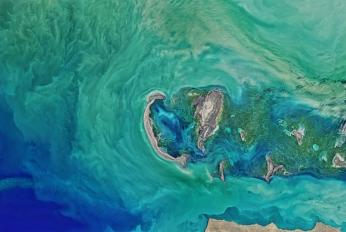 Thesis: “Current developments in the regime and international legal status of the Caspian Sea” by Dr. Barbara Janusz-PawlettaSat, 21/12/2024 - 16:04The Caspian Sea is the largest completely enclosed body of salt water in the world and constitutes a particularly fragile ecosystem. It contains great fishery resources, including 90% of the world’s stock of sturgeon, as well as vast oil and gas deposits in the subsoil. It is crossed by important transportation routes connec
Thesis: “Current developments in the regime and international legal status of the Caspian Sea” by Dr. Barbara Janusz-PawlettaSat, 21/12/2024 - 16:04The Caspian Sea is the largest completely enclosed body of salt water in the world and constitutes a particularly fragile ecosystem. It contains great fishery resources, including 90% of the world’s stock of sturgeon, as well as vast oil and gas deposits in the subsoil. It is crossed by important transportation routes connec
- Description
The Caspian Sea is the largest completely enclosed body of salt water in the world and constitutes a particularly fragile ecosystem. It contains great fishery resources, including 90% of the world’s stock of sturgeon, as well as vast oil and gas deposits in the subsoil. It is crossed by important transportation routes connecting Europe and Central Asia. For much of the twentieth century it was within the exclusive domain of Iran and the USSR, with the latter enjoying naval dominance. With the collapse of the Soviet Union the geopolitical situation in the region changed significantly. Instead of two, there are currently five riparian states – Russia, Iran, Azerbaijan, Kazakhstan and Turkmenistan – each filing differing legal claims.
- Attached documents
- Metadata
- Year
- 2009
 Caspian Sea Region: Environmental IssuesSat, 21/12/2024 - 16:01At the meeting point of the Middle East, Europe, and Asia, the Caspian region includes steppe land in the north, cold, continental deserts and semi-deserts in the northeast and east, and warmer mountain and highland systems in the south and southwest. The coastal wetlands of the Caspian basin include many shallow, saline poo
Caspian Sea Region: Environmental IssuesSat, 21/12/2024 - 16:01At the meeting point of the Middle East, Europe, and Asia, the Caspian region includes steppe land in the north, cold, continental deserts and semi-deserts in the northeast and east, and warmer mountain and highland systems in the south and southwest. The coastal wetlands of the Caspian basin include many shallow, saline poo
- Description
At the meeting point of the Middle East, Europe, and Asia, the Caspian region includes steppe land in the north, cold, continental deserts and semi-deserts in the northeast and east, and warmer mountain and highland systems in the south and southwest. The coastal wetlands of the Caspian basin include many shallow, saline pools, which attract a variety of bird life and biodiversity; over 400 species are unique to the Caspian. In addition, the sea's native sturgeon is famous the world around for the roe it produces: sturgeon from the Caspian Sea accounts for approximately 90% of the world's caviar industry.
- Attached documents
- Metadata
- Year
- 2003
 RF Report: Legislative and Institutional Measures for the Protection and Sustainable Development of the Caspian Sea Environment in the Russian FederationSat, 21/12/2024 - 15:57National Brief on Legislative and Institutional Measures for the Protection and Sustainable Development of the Caspian Sea Environment in the Russian Federation was made by the ANO "Centre for International Projects" (CIP) on the commission of the Ministry of Natural Resources of the Russian Federation in line with the prepa
RF Report: Legislative and Institutional Measures for the Protection and Sustainable Development of the Caspian Sea Environment in the Russian FederationSat, 21/12/2024 - 15:57National Brief on Legislative and Institutional Measures for the Protection and Sustainable Development of the Caspian Sea Environment in the Russian Federation was made by the ANO "Centre for International Projects" (CIP) on the commission of the Ministry of Natural Resources of the Russian Federation in line with the prepa
- Description
National Brief on Legislative and Institutional Measures for the Protection and Sustainable Development of the Caspian Sea Environment in the Russian Federation was made by the ANO "Centre for International Projects" (CIP) on the commission of the Ministry of Natural Resources of the Russian Federation in line with the preparation of the position of the Russian side to the 1st Conference of the Parties to the Tehran Convention, and according to the Memorandum of Understanding between UNEP/ROE and CIP.
The main objective of this work is assessment of the preparedness level of the national environmental legislation of the Russian Federation to provide implementation of the Tehran Convention provisions, as well as its protocols, which drafts are under the preparation by the experts from the Caspian littoral countries.
- Attached documents
- Metadata
- Year
- 2007
 IR Report: Updated Overview of Legislative and Institutional Framework for Protection and Sustainable Management of the Caspian Sea EnvironmentSat, 21/12/2024 - 15:46During the 6 years after the preparation of the national report, new pieces of legislation have emerged. These include The Caspian Sea Protection Convention and The 4th Social, Economic and Cultural Development Plan of the country. This report provides an updated overview of the laws, regulations and institutional frameworks
IR Report: Updated Overview of Legislative and Institutional Framework for Protection and Sustainable Management of the Caspian Sea EnvironmentSat, 21/12/2024 - 15:46During the 6 years after the preparation of the national report, new pieces of legislation have emerged. These include The Caspian Sea Protection Convention and The 4th Social, Economic and Cultural Development Plan of the country. This report provides an updated overview of the laws, regulations and institutional frameworks
- Description
During the 6 years after the preparation of the national report, new pieces of legislation have emerged. These include The Caspian Sea Protection Convention and The 4th Social, Economic and Cultural Development Plan of the country. This report provides an updated overview of the laws, regulations and institutional frameworks in place with regard to the protection of the Caspian Sea.
- Attached documents
- Metadata
- Year
- 2007
 KZ Report: Legislative and institutional frameworks for the protection and sustainable management of the Caspian Sea environmentSat, 21/12/2024 - 15:40In the Caspian Sea basin Mangistauskaya and Atyrauskaya oblast of Kazakhstan are located. The Ecological program of Mangistuskaya oblast for 2005-2007 directed to solve such problems as liquidation of historical pollution, biodiversity conservation and prevention of desertification and soil degradation, reduction of the volu
KZ Report: Legislative and institutional frameworks for the protection and sustainable management of the Caspian Sea environmentSat, 21/12/2024 - 15:40In the Caspian Sea basin Mangistauskaya and Atyrauskaya oblast of Kazakhstan are located. The Ecological program of Mangistuskaya oblast for 2005-2007 directed to solve such problems as liquidation of historical pollution, biodiversity conservation and prevention of desertification and soil degradation, reduction of the volu
- Description
In the Caspian Sea basin Mangistauskaya and Atyrauskaya oblast of Kazakhstan are located. The Ecological program of Mangistuskaya oblast for 2005-2007 directed to solve such problems as liquidation of historical pollution, biodiversity conservation and prevention of desertification and soil degradation, reduction of the volumes of industrial and household waste, etc. All regional programs are obligatory submitted to the approval of Ministry of Environment Protection of Republic of Kazakhstan (MoEP RK), and then it can be approved in regional Maslikhats. The Ecological program of Atyrauskaya oblast for 2006 - 2008 is approved in the MoEP and now is on the confirmation in the regional Maslikhat.
- Attached documents
- Metadata
- Year
- 2006
 Regional Report: Legislative and Institutional Frameworks for the Protection and Sustainable Management of the Caspian Sea Environment, 2007Sat, 21/12/2024 - 15:35The present report has been prepared by the regional legal expert – Irina Krasnova, professor of environmental law of the Russian Academy of Civil Service under the President of the Russian Federation, doctor of juridical science. The report is prepared within the framework of the Caspian Environment Programme in accordance
Regional Report: Legislative and Institutional Frameworks for the Protection and Sustainable Management of the Caspian Sea Environment, 2007Sat, 21/12/2024 - 15:35The present report has been prepared by the regional legal expert – Irina Krasnova, professor of environmental law of the Russian Academy of Civil Service under the President of the Russian Federation, doctor of juridical science. The report is prepared within the framework of the Caspian Environment Programme in accordance
- Description
The present report has been prepared by the regional legal expert – Irina Krasnova, professor of environmental law of the Russian Academy of Civil Service under the President of the Russian Federation, doctor of juridical science.
The report is prepared within the framework of the Caspian Environment Programme in accordance with the relevant UNEP project, the Terms of Reference for the Regional Legal Expert.
The Report is based on the National Briefs on Legislative and Institutional Frameworks for the Protection and Sustainable Management of the Caspian Sea Environment prepared by National Legal Experts of the five Contracting Parties to the Framework Convention for the Protection of the Marine Environment of the Caspian Sea (further – Tehran Convention), on the materials provided by the UNEP/ROE, and obtained from various information and data base sources, advice and cooperation of the CEP/PCU.
- Attached documents
- Metadata
- Year
- 2007
 Regional Report: Legal, Regulatory and Institutional Measures for the Protection and Sustainable Management of the Caspian Sea Ecosystem in the Riparian States, 2001Sat, 21/12/2024 - 15:20The present report has been prepared by the international legal consultant – Irina Krasnova, professor of environmental law of the Russian Academy of State Administration under the President of the Russian Federation, doctor of juridical science. The report is prepared within the framework of the Caspian Environment Program
Regional Report: Legal, Regulatory and Institutional Measures for the Protection and Sustainable Management of the Caspian Sea Ecosystem in the Riparian States, 2001Sat, 21/12/2024 - 15:20The present report has been prepared by the international legal consultant – Irina Krasnova, professor of environmental law of the Russian Academy of State Administration under the President of the Russian Federation, doctor of juridical science. The report is prepared within the framework of the Caspian Environment Program
- Description
The present report has been prepared by the international legal consultant – Irina Krasnova, professor of environmental law of the Russian Academy of State Administration under the President of the Russian Federation, doctor of juridical science.
The report is prepared within the framework of the Caspian Environment Programme in accordance with the relevant UNEP/UNDP/TACIS project, the Terms of Reference for the International Consultancy of Legal National Assessments attached in Annex III to the project and the Workplan for CRTC/LREI.
- Attached documents
- Metadata
- Year
- 2001
 Report: Marine Litter in the Caspian Sea, 2005Sat, 21/12/2024 - 15:15Marine litter (ML) is a complex though solvable problem with significant implications for the marine and coastal environment and human activities all around the world. It originates from several sources, travels in many paths and finally sinks in different distances from its origin making its wide spectrum of negative enviro
Report: Marine Litter in the Caspian Sea, 2005Sat, 21/12/2024 - 15:15Marine litter (ML) is a complex though solvable problem with significant implications for the marine and coastal environment and human activities all around the world. It originates from several sources, travels in many paths and finally sinks in different distances from its origin making its wide spectrum of negative enviro
- Description
Marine litter (ML) is a complex though solvable problem with significant implications for the marine and coastal environment and human activities all around the world. It originates from several sources, travels in many paths and finally sinks in different distances from its origin making its wide spectrum of negative environmental, economic, safety, health and cultural impacts highly considerable. Despite efforts made internationally, regionally and nationally, there are indications that the marine litter problem continues to worsen.
- Attached documents
- Metadata
- Year
- 2005
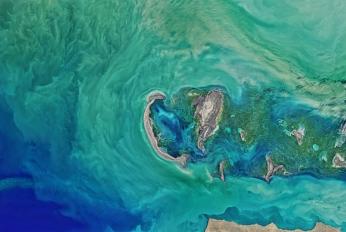 Public Participation Strategy for the Caspian Sea, 2005Sat, 21/12/2024 - 15:09Public Participation is stimulated in key international instruments such as the 1998 Aarhus Convention (Convention on Access to Information, Public Participation in Decision-Matters), signed and ratified by many of the Caspian Sea countries, and builds on the requirements of the Commission on Sustainable Development to promo
Public Participation Strategy for the Caspian Sea, 2005Sat, 21/12/2024 - 15:09Public Participation is stimulated in key international instruments such as the 1998 Aarhus Convention (Convention on Access to Information, Public Participation in Decision-Matters), signed and ratified by many of the Caspian Sea countries, and builds on the requirements of the Commission on Sustainable Development to promo
- Description
Public Participation is stimulated in key international instruments such as the 1998 Aarhus Convention (Convention on Access to Information, Public Participation in Decision-Matters), signed and ratified by many of the Caspian Sea countries, and builds on the requirements of the Commission on Sustainable Development to promote the implementation of Agenda 21 and the follow-up to the World Summit on Sustainable Development. Public participation is required within the Aarhus Convention and is in line with the principle 10 of the Rio Declaration on Environment and Development, and the United Nations Millennium Development Goals (MDGs).
- Attached documents
- Metadata
- Year
- 2005
 Report: Fisheries Management in the Caspian Sea, 2006Sat, 21/12/2024 - 15:00The Caspian Sea, world largest lake, is bordered by Azerbaijan Republic, Islamic Republic of Iran, Kazakhstan, Republic, Russian Federation and Turkmenistan. Its biodiversity is comprised of 1354 plant, animal and more than 122 fish species. Out of 122 fish species and subspecies living in the Caspian Sea, 40 species are com
Report: Fisheries Management in the Caspian Sea, 2006Sat, 21/12/2024 - 15:00The Caspian Sea, world largest lake, is bordered by Azerbaijan Republic, Islamic Republic of Iran, Kazakhstan, Republic, Russian Federation and Turkmenistan. Its biodiversity is comprised of 1354 plant, animal and more than 122 fish species. Out of 122 fish species and subspecies living in the Caspian Sea, 40 species are com
- Description
The Caspian Sea, world largest lake, is bordered by Azerbaijan Republic, Islamic Republic of Iran, Kazakhstan, Republic, Russian Federation and Turkmenistan. Its biodiversity is comprised of 1354 plant, animal and more than 122 fish species. Out of 122 fish species and subspecies living in the Caspian Sea, 40 species are commercial and presently 25 species are the main exploited fish. The Caspian Sea fishes are divided to four main groups, including 53 species Marine fishes (43.5%), 42 species (13.4%) of freshwater origin, 18 species (14.7%) anadromous and 9 species (7.4%) semi-anadromous. At present sturgeons, kilka and Caspian Sea seals are considered as shared stocks between Caspian Sea range states.
- Attached documents
- Metadata
- Year
- 2006
 1st_National Report_Russian Federation_in 2006-2007_for_Tehran Convention_-engSun, 26/03/2023 - 21:46The first national report of the Russian Federation on the implementation of the Tehran Convention was prepared in 2012 for 2006-2007 - from the moment of entry into force of the Convention. The National Report for 2006-2007 of the volume of 79 pages in Russian and 73 pages in English was prepared by “CIP“ (T.Butylina, A.Sav
1st_National Report_Russian Federation_in 2006-2007_for_Tehran Convention_-engSun, 26/03/2023 - 21:46The first national report of the Russian Federation on the implementation of the Tehran Convention was prepared in 2012 for 2006-2007 - from the moment of entry into force of the Convention. The National Report for 2006-2007 of the volume of 79 pages in Russian and 73 pages in English was prepared by “CIP“ (T.Butylina, A.Sav- Description
The first national report of the Russian Federation on the implementation of the Tehran Convention was prepared in 2012 for 2006-2007 - from the moment of entry into force of the Convention. The National Report for 2006-2007 of the volume of 79 pages in Russian and 73 pages in English was prepared by “CIP“ (T.Butylina, A.Savelyev, V.Markov, Zh.Novoselova) with financial support of the Ministry of Natural Resources of Russia.
The first national report of the Russian Federation based on a unified reporting format adopted in 2011 on KS-3 as a recommended scheme for the presentation of information by the Caspian countries. The National Report for 2006-2007 characterizes the organizational and administrative structure of the performance of obligations under the Convention, including the data of the relevant federal and regional integrated and thematic plans and development programs, as well as information on parameters, evaluations and trends and changes in the state of marine and coastal environment of the region.Первый национальный доклад Российской Федерации по реализации Тегеранской конвенции подготовлен в 2012 году за 2006-2007гг. – с момента вступления в силу Конвенции. Отчет был разработан в соответствии с решениями третьей сессии Конференции Сторон (КС-3, 2011г, Актау) на основе Унифицированного формата отчетности, принятого в 2011г на КС-3 в качестве рекомендуемой схемы представления информации прикаспийскими странами.
Национальный доклад за 2006-2007гг (объемом 79 стр. на русском и 73 стр. на английском языках) основан на анализе открытой различной тематической информации о состоянии окружающей среды и природоохранной деятельности в прикаспийских регионах России.
Специфика первых национальных докладов состоит в том, что они разрабатывались в отсутствие конвенции о правовом статусе Каспия.
Информация и данные,представленные в первом национальном докладе за 2006-2007гг. в рамках Тегеранской конвенции обозначили подходы российской национальной природоохранной политики на Каспии, которая рассматривает Каспий как единый географически и экологически системно-целостный объект. Любое воздействие на морскую среду Каспийского моря, где бы оно ни произошло, становится, в принципе, - трансграничным. Все проблемы, связанные с хозяйственной и иной деятельностью на акватории Каспия, решаются исключительно по соглашению прикаспийских государств.
Национальный доклад за 2006-2007гг характеризует организационно-административную структуру деятельности и информационного обеспечения выполнения обязательств по Конвенции, включая данные соответствующих федеральных и региональных комплексных и тематических планов и программ развития, а также информацию о параметрах, оценках и тенденциях и изменения состояния морской и прибрежной окружающей среды региона.
Доклад подготовлен «ЦМП» (Т.П.Бутылина, А.В. Савельев, В.А. Марков, Ж.Г. Новоселова) при финансовой поддержке Минприроды России.- Attached documents
- Metadata
- Year
- 2012
 Monitoring of the Caspian Seal in Turkmenistan, January – October, 2022Thu, 23/03/2023 - 08:31The Khazarskiy State Nature Reserve, the Caspian Group of the IUCN Joint SSC-WCPA Marine Mammal Protected Areas Task Force, Turkmenbashi, Turkmenistan; e-mail address: mammedowmerdan514@gmail.com
Monitoring of the Caspian Seal in Turkmenistan, January – October, 2022Thu, 23/03/2023 - 08:31The Khazarskiy State Nature Reserve, the Caspian Group of the IUCN Joint SSC-WCPA Marine Mammal Protected Areas Task Force, Turkmenbashi, Turkmenistan; e-mail address: mammedowmerdan514@gmail.com
- Description
The Khazarskiy State Nature Reserve, the Caspian Group of the IUCN Joint SSC-WCPA Marine Mammal Protected Areas Task Force, Turkmenbashi, Turkmenistan; e-mail address: mammedowmerdan514@gmail.com
- Attached documents
- Metadata
- Year
- 2022
 Special Issue of CAT news. The Persian Leopard: Status of Persian leopards in northern Iran and Central AsiaThu, 16/03/2023 - 17:09The Persian leopard Panthera pardus tulliana is an endangered large felid living in mountainous landscapes of the Caucasus, Southwest Asia and parts of Central Asia. In this paper, we review available literature to update our information on the status, population, ecology, threats, and management recommendations in regard to
Special Issue of CAT news. The Persian Leopard: Status of Persian leopards in northern Iran and Central AsiaThu, 16/03/2023 - 17:09The Persian leopard Panthera pardus tulliana is an endangered large felid living in mountainous landscapes of the Caucasus, Southwest Asia and parts of Central Asia. In this paper, we review available literature to update our information on the status, population, ecology, threats, and management recommendations in regard to
- Description
The Persian leopard Panthera pardus tulliana is an endangered large felid living in mountainous landscapes of the Caucasus, Southwest Asia and parts of Central Asia. In this paper, we review available literature to update our information on the status, population, ecology, threats, and management recommendations in regard to this big cat in the region. Most of the Alborz and Kopetdag Ecoregions harbour the largest population of Persian leopard with some protected areas having the highest densities of these carnivores. A total of 348 to 440 leopards are guessed to exist in the region, making it one of the largest continuous leopard hotspots across Asia. Almost 80% of the population exists in Iran, followed by Turkmenistan which holds the second largest Persian leopard population, while the leopard population in Kazakhstan mainly depends on transboundary transient individuals from Turkmenistan.
- Attached documents
- Metadata
- Year
- 2022
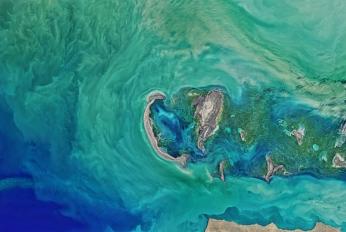 Caspian Environment Monitoring Programme - 2012Mon, 20/02/2023 - 14:41Unified, Integrated and Affordable Caspian Environment Monitoring Programme Among the Contracting Parties to the Framework Convention for the Protection of the Marine Environment of the Caspian Sea was welcomed at COP4, Moscow, Russian Federation, 10-12 December 2012. The objectives of the EMP to develop a framework providi
Caspian Environment Monitoring Programme - 2012Mon, 20/02/2023 - 14:41Unified, Integrated and Affordable Caspian Environment Monitoring Programme Among the Contracting Parties to the Framework Convention for the Protection of the Marine Environment of the Caspian Sea was welcomed at COP4, Moscow, Russian Federation, 10-12 December 2012. The objectives of the EMP to develop a framework providi
- Description
Unified, Integrated and Affordable Caspian Environment Monitoring Programme Among the Contracting Parties to the Framework Convention for the Protection of the Marine Environment of the Caspian Sea was welcomed at COP4, Moscow, Russian Federation, 10-12 December 2012.
The objectives of the EMP to develop a framework providing the necessary data and information on the Caspian environment in order to; initially provide data on the state of the Caspian environment, highlight pollution problems, provide biological related data which will support the broad objective of tracking changes of the health and diversity of ecosystems in, and adjacent to, the Caspian Sea.
- Attached documents
- Metadata
- Year
- 2012
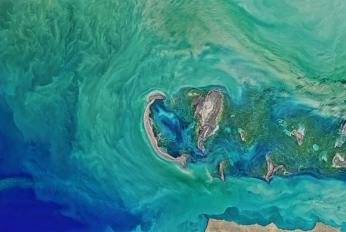 Draft Caspian Sea Plan Concerning Regional Cooperation in Combating Oil Pollution in Cases of EmergencyMon, 20/02/2023 - 14:36Draft Caspian Sea Plan Concerning Regional Cooperation in Combating Oil Pollution in Cases of Emergency (Aktau Protocol Implementation Plan). The arrangements in the Aktau Protocol Implementation Plan are intended to facilitate the development of joint response operations and to co-ordinate the use of the available resource
Draft Caspian Sea Plan Concerning Regional Cooperation in Combating Oil Pollution in Cases of EmergencyMon, 20/02/2023 - 14:36Draft Caspian Sea Plan Concerning Regional Cooperation in Combating Oil Pollution in Cases of Emergency (Aktau Protocol Implementation Plan). The arrangements in the Aktau Protocol Implementation Plan are intended to facilitate the development of joint response operations and to co-ordinate the use of the available resource
- Description
Draft Caspian Sea Plan Concerning Regional Cooperation in Combating Oil Pollution in Cases of Emergency (Aktau Protocol Implementation Plan).
The arrangements in the Aktau Protocol Implementation Plan are intended to facilitate the development of joint response operations and to co-ordinate the use of the available resources in the region. They also outline in advance the financial conditions and administrative clauses of the actions, thus permitting rapid intervention in case of emergency by removing the need for lengthy negotiations during the course of the event.
- Attached documents
- Metadata
- Year
- 2019
 Strategy for Civil Society Engagement in the Caspian Sea Marine EnvironmentMon, 20/02/2023 - 14:22Strategy for Civil Society Engagement in the Protection of the Caspian Sea Marine Environment was presented at the COP3 in Aktau, Kazakhstan, 10–12 August 2011. It contains an analysis and a number of recommendations to improve access to information and participation in decision-making and action towards the implementation o
Strategy for Civil Society Engagement in the Caspian Sea Marine EnvironmentMon, 20/02/2023 - 14:22Strategy for Civil Society Engagement in the Protection of the Caspian Sea Marine Environment was presented at the COP3 in Aktau, Kazakhstan, 10–12 August 2011. It contains an analysis and a number of recommendations to improve access to information and participation in decision-making and action towards the implementation o
- Description
Strategy for Civil Society Engagement in the Protection of the Caspian Sea Marine Environment was presented at the COP3 in Aktau, Kazakhstan, 10–12 August 2011. It contains an analysis and a number of recommendations to improve access to information and participation in decision-making and action towards the implementation of the Tehran Convention and its Protocols at the local, national and regional levels.
- Attached documents
- Metadata
- Year
- 2011
 Strategic Convention Action Programme (SCAP)Mon, 20/02/2023 - 14:16In accordance with Article 18 (2) of the Tehran Convention, the Parties developed the Strategic Convention Action Programme (SCAP). The SCAP is a comprehensive, long-term agenda and framework for the implementation of the Tehran Convention and its Protocols over a period of 10 years. It was adopted at COP 2 in Tehran, Iran,
Strategic Convention Action Programme (SCAP)Mon, 20/02/2023 - 14:16In accordance with Article 18 (2) of the Tehran Convention, the Parties developed the Strategic Convention Action Programme (SCAP). The SCAP is a comprehensive, long-term agenda and framework for the implementation of the Tehran Convention and its Protocols over a period of 10 years. It was adopted at COP 2 in Tehran, Iran,
- Description
In accordance with Article 18 (2) of the Tehran Convention, the Parties developed the Strategic Convention Action Programme (SCAP). The SCAP is a comprehensive, long-term agenda and framework for the implementation of the Tehran Convention and its Protocols over a period of 10 years. It was adopted at COP 2 in Tehran, Iran, 10-12 November 2008.
- Attached documents
- Metadata
- Year
- 2008
 Rules of Procedure of the Tehran ConventionMon, 20/02/2023 - 14:10Rules of Procedure for the Conference of the Parties to the Framework Convention for the Protection of the Marine Environment of the Caspian Sea. Adopted at COP 2 in Tehran, Iran, 10-12 November 2008.
Rules of Procedure of the Tehran ConventionMon, 20/02/2023 - 14:10Rules of Procedure for the Conference of the Parties to the Framework Convention for the Protection of the Marine Environment of the Caspian Sea. Adopted at COP 2 in Tehran, Iran, 10-12 November 2008.
- Description
Rules of Procedure for the Conference of the Parties to the Framework Convention for the Protection of the Marine Environment of the Caspian Sea. Adopted at COP 2 in Tehran, Iran, 10-12 November 2008.
- Attached documents
- Metadata
- Year
- 2008
 Financial Rules for the Administration of the Trust Fund for the Tehran ConventionMon, 20/02/2023 - 13:36Financial Rules for the Administration of the Trust Fund for the Framework Convention for the Protection of the Marine Environment of the Caspian Sea. Adopted at COP 1 in Baku, Azerbaijan, 23-25 May 2007.
Financial Rules for the Administration of the Trust Fund for the Tehran ConventionMon, 20/02/2023 - 13:36Financial Rules for the Administration of the Trust Fund for the Framework Convention for the Protection of the Marine Environment of the Caspian Sea. Adopted at COP 1 in Baku, Azerbaijan, 23-25 May 2007.
- Description
Financial Rules for the Administration of the Trust Fund for the Framework Convention for the Protection of the Marine Environment of the Caspian Sea.
Adopted at COP 1 in Baku, Azerbaijan, 23-25 May 2007.
- Attached documents
- Metadata
- Year
- 2007
 Draft Caspian Regional Action Plan on Marine LitterMon, 20/02/2023 - 12:33Marine litter, including plastic and microplastic, is a global concern affecting all the oceans and seas of the world. It poses environmental, economic, health and aesthetic problems that are rooted in poor solid waste management practices, lack of infrastructure, indiscriminate human activities and behaviours and an inadequ
Draft Caspian Regional Action Plan on Marine LitterMon, 20/02/2023 - 12:33Marine litter, including plastic and microplastic, is a global concern affecting all the oceans and seas of the world. It poses environmental, economic, health and aesthetic problems that are rooted in poor solid waste management practices, lack of infrastructure, indiscriminate human activities and behaviours and an inadequ
- Description
Marine litter, including plastic and microplastic, is a global concern affecting all the oceans and seas of the world. It poses environmental, economic, health and aesthetic problems that are rooted in poor solid waste management practices, lack of infrastructure, indiscriminate human activities and behaviours and an inadequate understanding on the part of the public of the potential consequences of their actions. Development of the Caspian Marine Litter Action Plan is embodied in the Moscow Protocol against pollution from land-based sources.
The preparation of the draft Caspian Regional Marine Litter Action Plan (CRMLAP) was undertaken by the national experts from the Caspian Sea littoral states and an international expert. For that purpose, five National Experts were contracted to provide their national inputs and contributions for the development of the Caspian Marine Litter Action Plan where the International Expert fully facilitates the development of the Caspian Marine Litter Action Plan.
- Attached documents
- Metadata
- Year
- 2020
Document
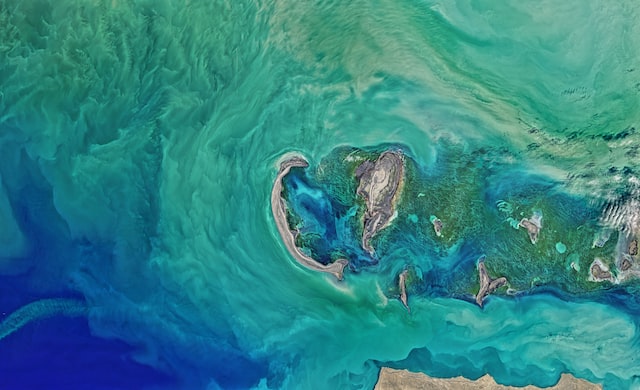
Thesis: “Current developments in the regime and international legal status of the Caspian Sea” by Dr. Barbara Janusz-Pawletta
Document

Caspian Sea Region: Environmental Issues
Document

RF Report: Legislative and Institutional Measures for the Protection and Sustainable Development of the Caspian Sea Environment in the Russian Federation
Document

IR Report: Updated Overview of Legislative and Institutional Framework for Protection and Sustainable Management of the Caspian Sea Environment
Document

KZ Report: Legislative and institutional frameworks for the protection and sustainable management of the Caspian Sea environment
Document

Regional Report: Legislative and Institutional Frameworks for the Protection and Sustainable Management of the Caspian Sea Environment, 2007
Document

Regional Report: Legal, Regulatory and Institutional Measures for the Protection and Sustainable Management of the Caspian Sea Ecosystem in the Riparian States, 2001
Document

Report: Marine Litter in the Caspian Sea, 2005
Document

Public Participation Strategy for the Caspian Sea, 2005
Document

Report: Fisheries Management in the Caspian Sea, 2006
Document
1st_National Report_Russian Federation_in 2006-2007_for_Tehran Convention_-eng
Document

Monitoring of the Caspian Seal in Turkmenistan, January – October, 2022
Document

Special Issue of CAT news. The Persian Leopard: Status of Persian leopards in northern Iran and Central Asia
Document
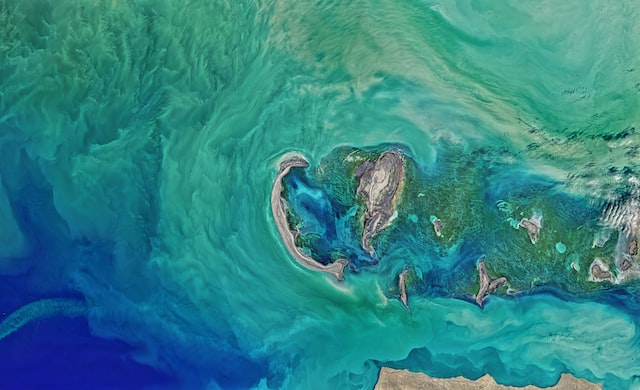
Caspian Environment Monitoring Programme - 2012
Document
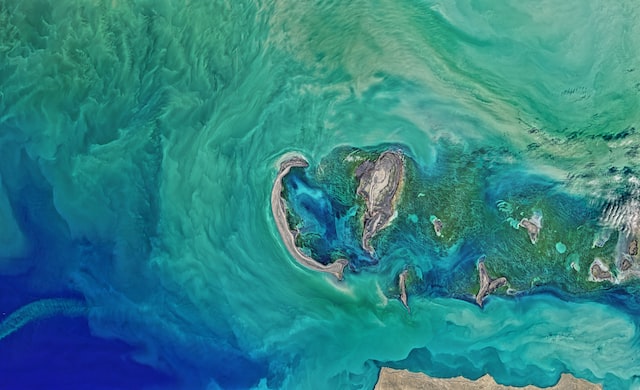
Draft Caspian Sea Plan Concerning Regional Cooperation in Combating Oil Pollution in Cases of Emergency
Document

Strategy for Civil Society Engagement in the Caspian Sea Marine Environment
Document

Strategic Convention Action Programme (SCAP)
Document

Rules of Procedure of the Tehran Convention
Document

Financial Rules for the Administration of the Trust Fund for the Tehran Convention
Document

